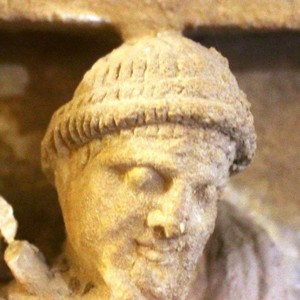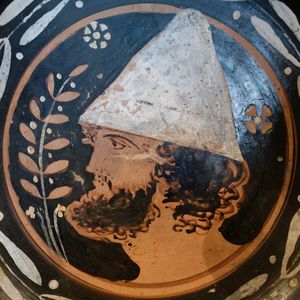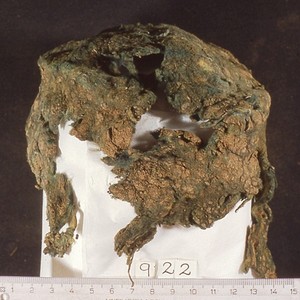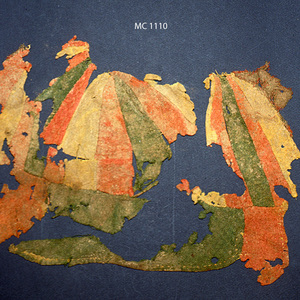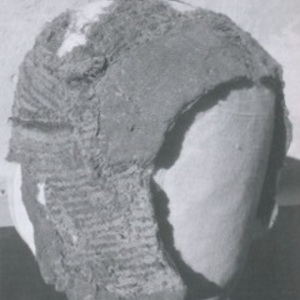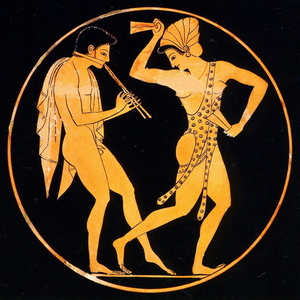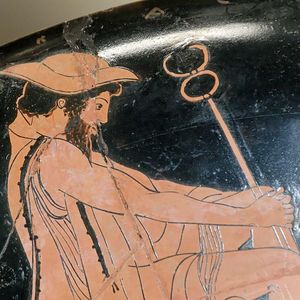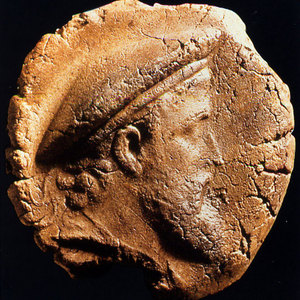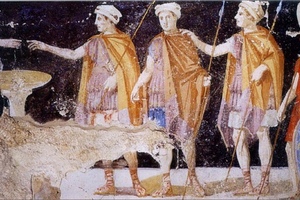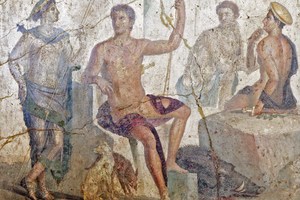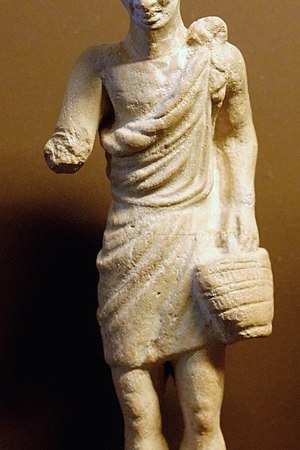Headwear
In the ancient world, headwear made primarily of fabric (felted wool) and straw, and sometimes leather, was prevalent. They were worn by both men and women of all existing peoples of that time - Celts, Romans, Greeks, Dacians, Parthians, and so on. Each region had its own peculiarities, often with headwear resembling helmets in shape. Some of the headwear found by archaeologists were likely used as undercaps.
Headwear protected its wearer from heat and cold, provided protection in battle, and served as a fashionable accessory.
Hats saved their owner from heat and cold, protected them in battle, and were also a fashion accessory.
Among the headwear of the Greco-Roman culture, several types can be distinguished:
- Regular caps: Round-shaped, sometimes with cheekpieces. They resembled roman helmets in shape.
- Mitra or Phrygian cap: Elongated caps with a characteristic "pompom".
- Petaus: Caps with wide brims, presumably made of straw.
- Pileus: Resembled the shape of the Greek helmets of the same name.
There are more archaeological sources available to us than pictorial ones. Many headwear items have been found in Egypt, with the majority made of wool.
Headwear can also include wreaths and diadems, which served as status symbols.
Related topics
Undercap, Celtic headwear, Men in Ancient Greece, Men in Ancient Rome, Women in Ancient Greece, Women in Ancient Rome, Crown

 Gallery
Gallery







